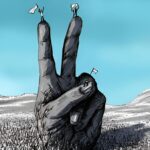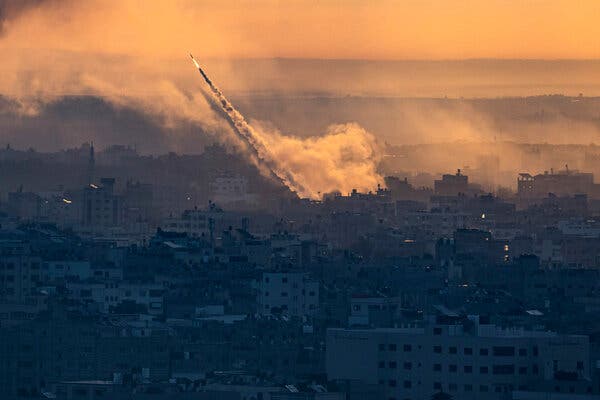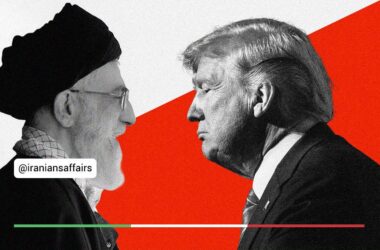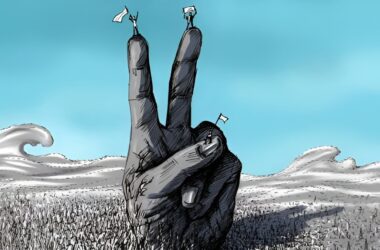Why do Iranian people support Israel?
On the morning of October 7th, the news of Hamas terrorist group’s brutal attack on unarmed Israeli civilians and the merciless massacre quickly made headlines in the international news, prompting strong reactions from many people and politicians worldwide against this inhumane act.
Simultaneously with these positions and public outrage against Hamas’ crimes, as predicted, the ruling clerics in Tehran quickly expressed support for Hamas. The forces of IRGC and its affiliated paramilitary groups known as Basij in Iran organized a celebration on the streets of Tehran. However, among the people of Iran, what was unfolding was entirely contrary to the government’s approach. The people expressed solidarity with Israel alongside their longstanding resentment and anger towards the actions of Palestinian militant groups. One of the most prominent manifestations of this public sentiment was seen in a football match involving Persepolis team, which turned into a global video.
In other countries as well, Iranians were among the few nationalities who consistently participated in demonstrations of support and solidarity with the Israeli people last week. On the other hand, in the camp of Hamas supporters, we witnessed the least presence of Iranians, and the Iranians present at gatherings in support of Hamas were mostly individuals closely aligned or sympathetic to the ruling regime in Tehran.
This was while other countries in the region, namely Arab-Islamic countries as well as Turkey, showed caution in their response to this action. Even Qatar, known as the main financial and political supporter of Hamas, did not overlook this caution.
However, the people in Middle Eastern Islamic societies quickly organized street demonstrations and openly expressed support for Hamas. In fact, while the governments of Arab countries and Turkey tried to maintain an anti-Israel stance and support for Palestine by adhering to diplomatic cautions and without explicit endorsement of Hamas actions, the people in some of these countries took to the streets in strong support of Hamas, often surpassing the positions of their own leaders.
This Arab-Islamic wave was accompanied by a wave of support from leftist groups in Europe and North America. Amidst this, the behavior of the Iranian people was entirely different. In a country where supporting Israel or expressing friendship towards the country and its people is deemed a crime, the Iranian people sent a significant message, which is still being overlooked either intentionally or due to the dominance of news related to the war.
Now, over a week since the Hamas atrocities and the start of the Israeli military operation against this group, alignments have become more apparent. Some countries, under the guise of defending the non-combatant people of Gaza, have taken a stand against Israel’s actions, and their streets witness daily demonstrations in support of Hamas. The differing approach of the Iranian people, even more evident than in the initial days of this war, highlights the roots and reasons for their empathetic stance towards Israel. Understanding this solidarity could provide insights for analyzing future events in Iran and the region.
What is clearly observable on social media and within Iranian society is that from the moment the first images of Hamas’ attack on unarmed people in Israel were circulated, Iranians quickly drew parallels with three historical events and sympathized and empathized with the attacked party.
The first event that has always existed as a bitter historical tragedy in the collective memory of Iranians is the saga of Muslim Arab invasions of the Persian Empire. This involved the killing, plundering, and violation of Iranians, coercing them into accepting Islam during the early centuries of Islam’s advent.
Iran’s history is rich with evidence showing that during that time, Muslim Arabs, considering themselves the chosen people of God and regarding Iranians as infidels or impure, deemed it permissible to take the lives, properties, and women of Iranians based on the Quran. They carried out horrific massacres, enslavement, and the buying and selling of Iranian women and girls. Even after 14 centuries, the collective conscience of Iranians has preserved this brutal attack as a deep-seated resentment. The images transmitted from Israeli towns were reminiscent of that bitter era for Iranians, evoking a strong subconscious sense of identification with the victims.
The second historical phase that caused Iranians to empathize with the victims in this war and harbor resentment against the invading forces was a significant event in Iran’s contemporary history—the overthrow of the monarchy in Iran in 1979. Many Iranians refer to this event as the “Second Qadesiyeh.” The Qadesiyeh War was the same war in which the Arab Muslim forces managed to defeat the Iranian army and conquer the Persian Empire.
Many Iranians view the events of 1979 as a repetition of that same tragedy, a second fall of the Iranian monarchy, this time at the hands of the new generation of Muslim invaders, namely the clerics.
However, a very important point about the 1979 event in Iran is that what actually triumphed was Arab nationalism—the same perspective that highlights Palestine as a rallying point for various ethnic groups worldwide and, behind this mask, follows a deeply racist idea in the Middle East.
The Arab nationalism movement, some prominent figures of which have explicitly expressed desires for the destruction of Iranians and Jews, is a communist or socialist movement centered around the Arab Muslim nation.
In the view of this movement, which emerged after the collapse of the Ottoman Empire and was epitomized by the Muslim Brotherhood in Egypt, alongside Muammar Gaddafi in Libya, and the Ba’ath Party in Iraq and Syria, the Middle East should be under the control of the Arab Muslim nation’s unity. Iranians and Jews are perceived as bothersome flies disrupting this unity.
This movement, through financial support, arming, military training, and dispatching forces to Iran, played a significant role in bringing the mullahs to power in Tehran. The ruling clerics in Iran, from the moment they seized power, strengthened the Palestinian issue as the focal point of Arab nationalism unity.
Therefore, in the minds of Iranians, the 1979 event in Iran is perceived as the victory of the Arab nationalist movement against Iran’s national identity, and what threatens Israel today resembles the very thing that occupied Iran nearly 45 years ago. For this reason, Iranians wish for a country like themselves, targeted for attack in the Middle East due to not being Arab Muslims, to find salvation.
The third issue that Iranians recalled after Hamas’ attack is the continuation of the same efforts by the Arab nationalist movement after 1979: “Saddam Hussein’s regime’s invasion of Iran.” This military aggression by someone who sought to present himself as the ideal leader of the Arab people after conquering Iran has always been supported by various groups, including the Palestinians. Even today, in Gaza under the rule of the Hamas terrorist group, there is a street named after Saddam, whom they consider as the “Commander of Qadesiyeh.”
Iranians not only view the Arab-Islamic coalition as the supporters of the 1979 events and Iraq’s invasion of Iran, but they also rightly see the deeply-rooted animosity of this movement towards Iran’s national identity and territorial integrity today. As a result, unlike other nations in the region, they stand on the side of supporting Israel due to their perception of this movement’s vengeful stance against Iran’s national identity and territorial integrity.
This significant distinction of the Iranian people from other Muslim nations in the region is the key point that, as long as it is not acknowledged in the West, considering the Iranian government and the Iranian nation as one entity will consistently lead to misguided decisions and detrimental outcomes.

